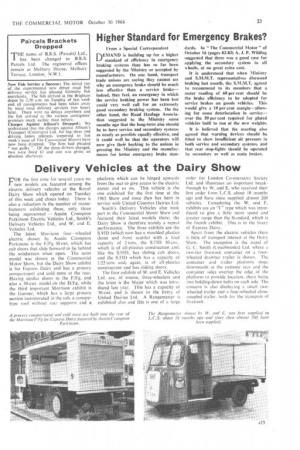Higher Standard for Emergency Brakes?
Page 25

If you've noticed an error in this article please click here to report it so we can fix it.
From a Special Correspondent
DEMAND is building up for a higher standard of efficiency in emergency braking systems than has so far been suggested by the Ministry or accepted by manufacturers. On one hand, transport trade unions are saying they cannot see why an emergency brake should be much less effective than a service brake— indeed, they feel, an emergency in which the service braking power has been lost could very well call for an extremely good secondary braking system. On the other hand, the Road Haulage Association suggested to the Ministry some months ago that the long-term aim should be to have service and secondary systems as nearly as possible equally effective, and it could well be that the operators will now give their backing to the unions in pressing the Ministry and the manufacturers for better emergency brake stan
dards. In "The Commercial Motor" of October 16 (pages 82-83) A. J. P. Wilding suggested that there was a good case for applying the secondary system to all wheels, at no great extra cost.
It is understood that when Ministry and S.M.M.T. representatives discussed braking last month, the S.M.M.T. agreed to recommend to its members that a meter reading of 60 per cent should be the brake efficiency to be adopted for service brakes on goods vehicles. This would give a 10 per cent margin—allowing for some deterioration in service— over the 50 per cent required for plated vehicles built to run at the new weights.
It is believed that the meeting also agreed that warning devices should he fitted to show insufficient air pressure in both service and secondary systems, and that rear stop-lights should be operated by secondary as well as main brakes.












































































































